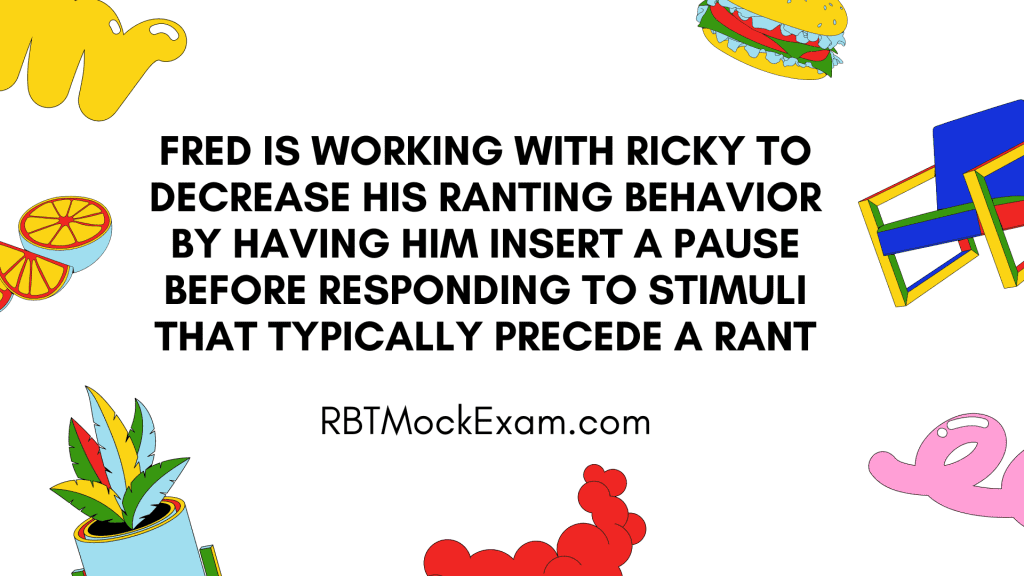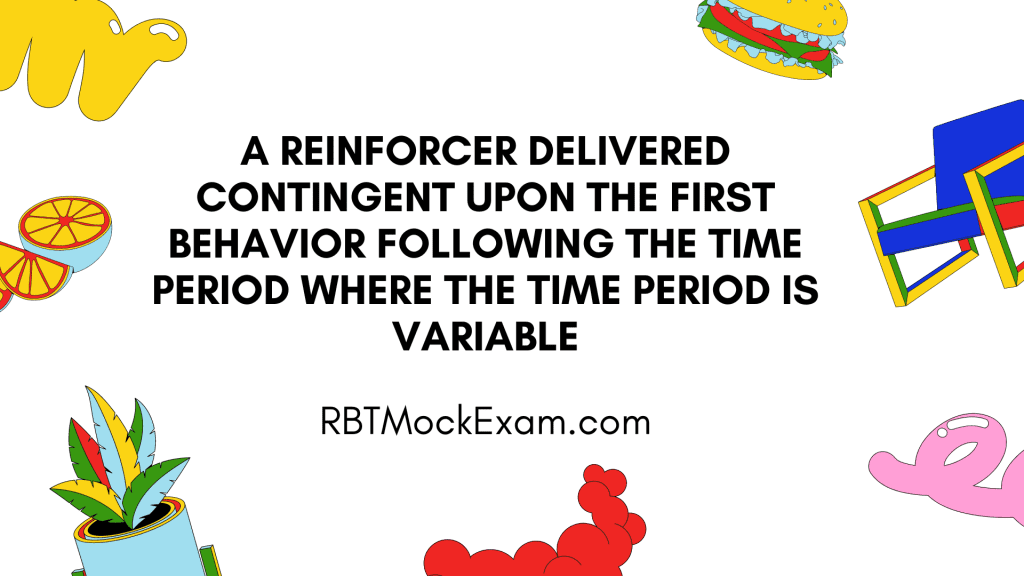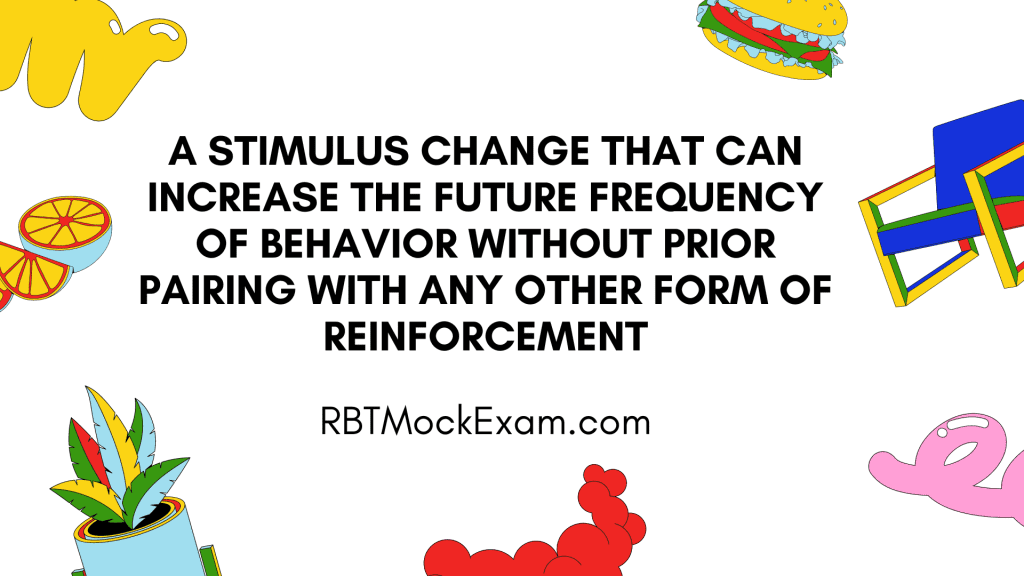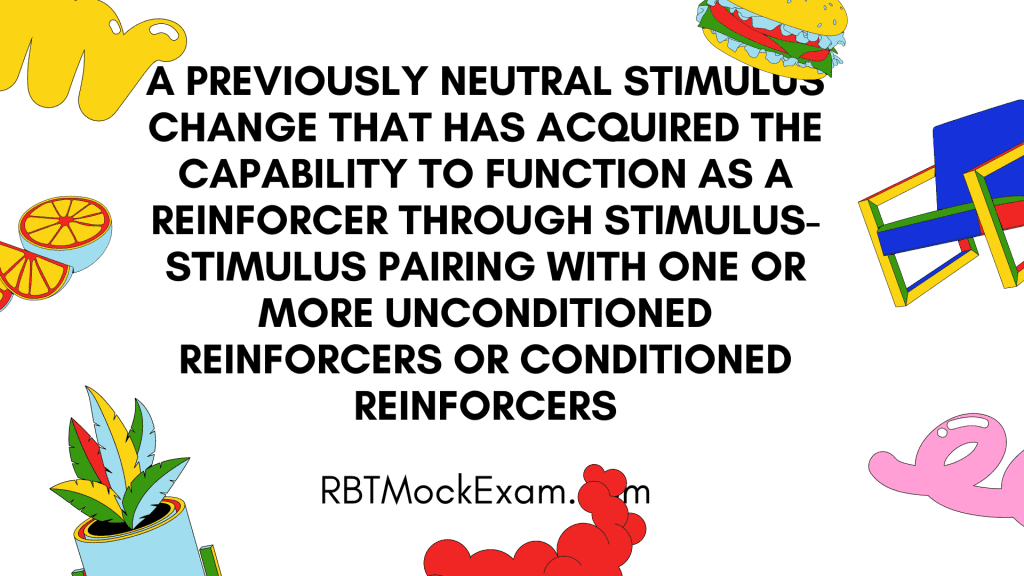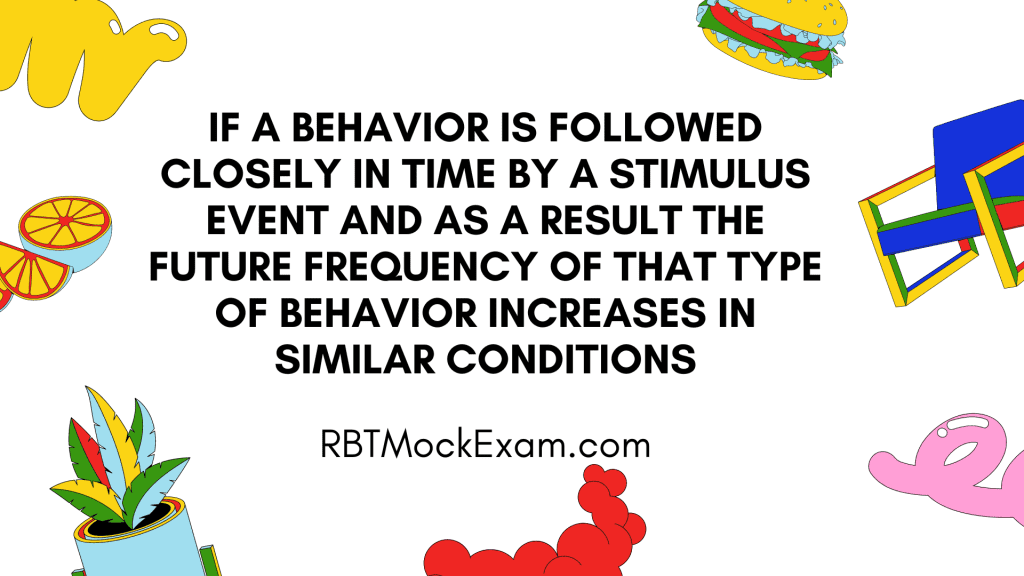Question: Fred is working with Ricky to decrease his ranting behavior by having him insert a pause before responding to stimuli that typically precede a rant. Inserting a pause is the replacement behavior. Which of the following methods could you use to measure Ricky’s progress with using the replacement behavior?
Options:
- Frequency of rants
- Duration of rants
- Latency between stimulus and rant
- Intensity of rants
Correct Answer: 3. Latency between stimulus and rant
Explanation: Latency is the time that elapses between a stimulus’s presentation and the response’s onset. Measuring the latency between the stimulus that typically precedes a rant and the rant itself can help determine if Ricky successfully uses the replacement behavior (inserting a pause). If the latency increases, it indicates that Ricky is taking more time to respond, suggesting that the replacement behavior is being used effectively.
Practice Tests On This Question
Latency in behavioral terms refers to the time interval between a stimulus’s presentation and a response’s onset. In Ricky’s case, it’s the time between the occurrence of a trigger (stimulus) and the beginning of his rant (response).
Key points about latency:
- Measured in units of time (e.g., seconds, minutes)
- Focuses on the delay before a behavior starts, not its duration or frequency
- Can indicate hesitation, processing time, or implementation of alternative behaviors
- In this intervention, an increase in latency is desirable, showing Ricky is pausing before reacting.
Comparison with Other Measures
a) Frequency:
- Measures how often a behavior occurs
- Less suitable because it doesn’t capture the use of the pause technique
- A decrease in frequency could be due to other factors, not necessarily the successful implementation of the pause
b) Duration:
- Measures how long a behavior lasts
- Not ideal because it doesn’t reflect the time between stimulus and response
- The length of rants might not change even if Ricky is successfully pausing beforehand
c) Intensity:
- Measures the strength or severity of a behavior
- Doesn’t capture the temporal aspect of inserting a pause
- Rants could still be intense even if Ricky is pausing before starting them
Latency is most suitable because it directly measures the intervention’s goal: increasing the time between trigger and response.
Data Collection Methods
Latency data can be collected through various methods:
a) Direct observation:
- An observer uses a stopwatch to time the interval between stimulus and response
- Requires clear operational definitions of what constitutes the stimulus and the start of the rant
b) Video recording:
- Interactions are recorded and analyzed later
- Allows for precise measurement and reliability checks
c) Self-reporting:
- Ricky or those around him could estimate and record the time between trigger and rant
- Less precise but can be useful for generalization outside observed settings
d) Electronic devices:
- Wearable technology or apps could be used to mark stimulus onset and response beginning
- Provides accurate timing and can collect data in natural environments
e) Interval recording:
- Observer checks at set intervals whether a rant has started after a known trigger
- Less precise than exact timing but can be easier to implement in some settings
When collecting latency data, it’s important to:
- Clearly define the stimulus and the beginning of the response
- Ensure consistency in measurement across different observers or settings
- Consider the natural variability in response times
- Collect enough data points to establish trends and patterns

